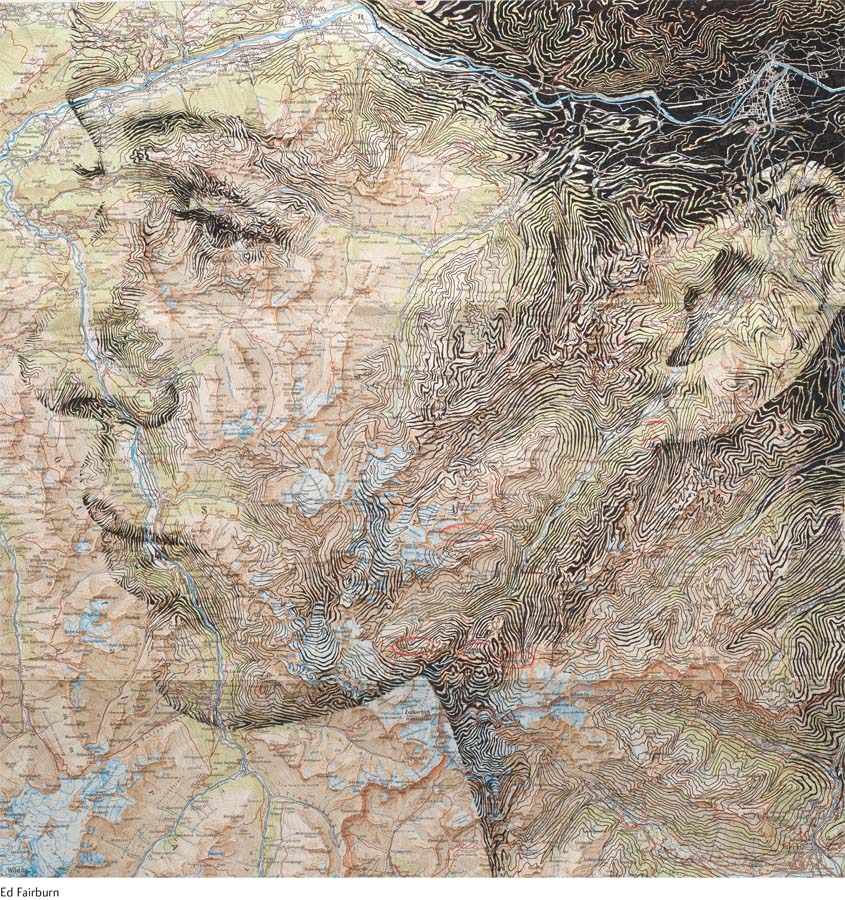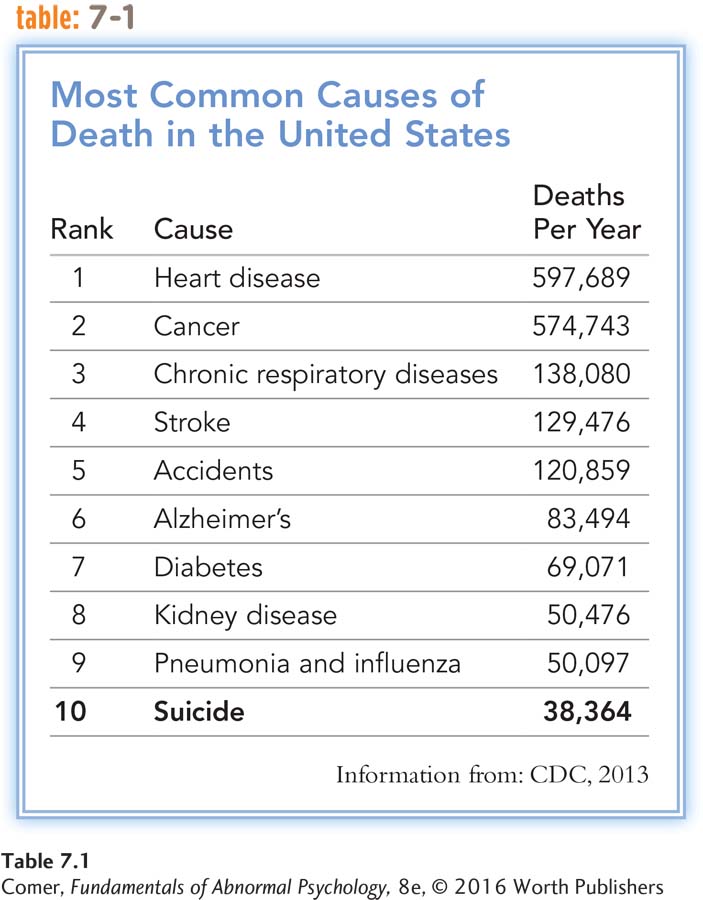Chapter 7 Introduction
CHAPTER 7
TOPIC OVERVIEW
How Is Suicide Studied?
Patterns and Statistics
Stressful Events and Situations
Mood and Thought Changes
Alcohol and Other Drug Use
Mental Disorders
Modeling: The Contagion of Suicide
The Psychodynamic View
Durkheim’s Sociocultural View
The Biological View
Children
Adolescents
The Elderly
What Treatments Are Used After Suicide Attempts?
What Is Suicide Prevention?
Do Suicide Prevention Programs Work?
Suicide

The war in Iraq never ended for Jonathan Michael Boucher. Not when he flew home from Baghdad, not when he moved to Saratoga Springs for a fresh start and, especially, not when nighttime arrived.
Tortured by what he saw as an 18-
On May 15, three days before his 24th birthday, the young veteran committed suicide in his apartment’s bathroom, stunning friends and family…. There was no note….
Johnny Boucher joined the Army right after graduating from East Lyme High School in Connecticut in 2002 because he was emotionally moved by the Sept. 11, 2001, terrorist attacks. “He felt it was his duty to do what he could for America,” his father, Steven Boucher, 50, said.
Shortly after enlisting, the 6-
But it was during those early months of the war that Johnny Boucher had the evils of combat etched into his mind. The soldier was devastated by seeing a young Iraqi boy holding his dead father, who had been shot in the head. Later, near the airport, the soldier saw four good friends in his artillery battery killed in a vehicle accident minutes after one of them relieved him from duty, his father said.
Boucher tried to rescue the soldiers. Their deaths and other things his son saw deeply impacted his soul after he returned because he was sensitive about family and very patriotic, Steven Boucher said….
But when the sun set, memories of combat and lost friends rose to the top, causing the former artilleryman severe nightmares. Sometimes he would curl up in a ball and weep, causing his parents to try to comfort him…. “At nighttime, he was just haunted,” Steven Boucher said…. “Haunted, I think, by war.” Bitterness about the war had crept in, and the troubled former soldier started drinking to calm himself….
Supported by a huge family he adored ….ohnny Boucher recently got his own apartment on Franklin Street and appeared to be getting back on track. He seemed to be calm and enjoying life. But it was difficult to tell, and he was still fearful of sleep, his father said. They had plans for a hike, a birthday party and attending his brother Jeffrey’s graduation…. Then, without warning, Johnny Boucher was gone. He hanged himself next to a Bible, his Army uniform and a garden statue of an angel, said his mother, who discovered him after he failed to show up to work for two days….
Yusko, 2008
Salmon spawn and then die, after an exhausting upstream swim to their breeding ground. Lemmings rush to the sea and drown. But only humans knowingly take their own lives. The actions of salmon and lemmings are instinctual responses that may even help their species survive in the long run. Only in the human act of suicide do beings act for the specific purpose of putting an end to their lives.
Suicide has been recorded throughout history. The Old Testament described King Saul’s suicide: “There Saul took a sword and fell on it.” The ancient Chinese, Greeks, and Romans also provided examples. In more recent times, suicides by such celebrated individuals as writer Ernest Hemingway, actress Marilyn Monroe, rock star Kurt Cobain, and comedian Robin Williams have both shocked and fascinated the public.
Today suicide is one of the leading causes of death in the world. By the time you finish reading this page and the next, someone in the United States will have killed himself or herself (AFSP, 2014). In fact, at least 100 Americans will have taken their own lives by this time tomorrow.
parasuicide A suicide attempt that does not result in death.

It has been estimated that 1 million people die by suicide each year, more than 38,000 in the United States alone (AFSP, 2014; CDC, 2013) (see Table 7.1). Around 25 million other people throughout the world—
Suicide is not officially classified as a mental disorder, although DSM-